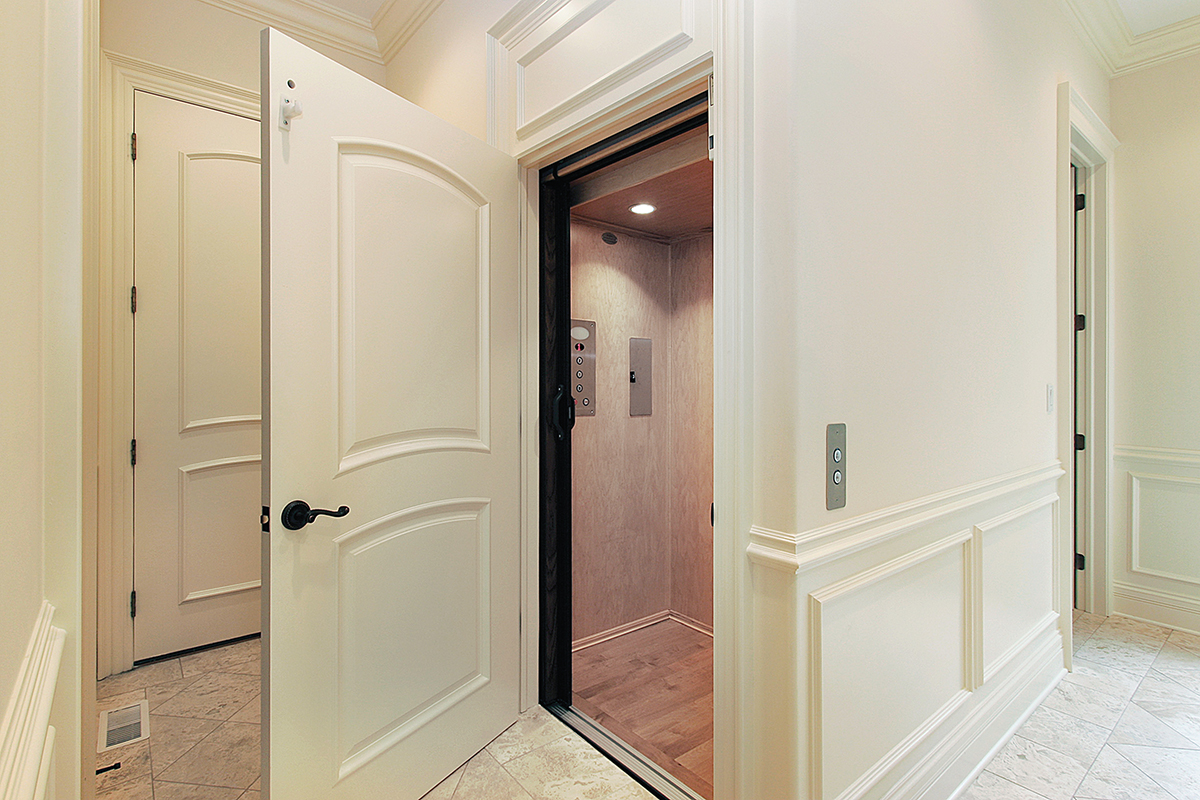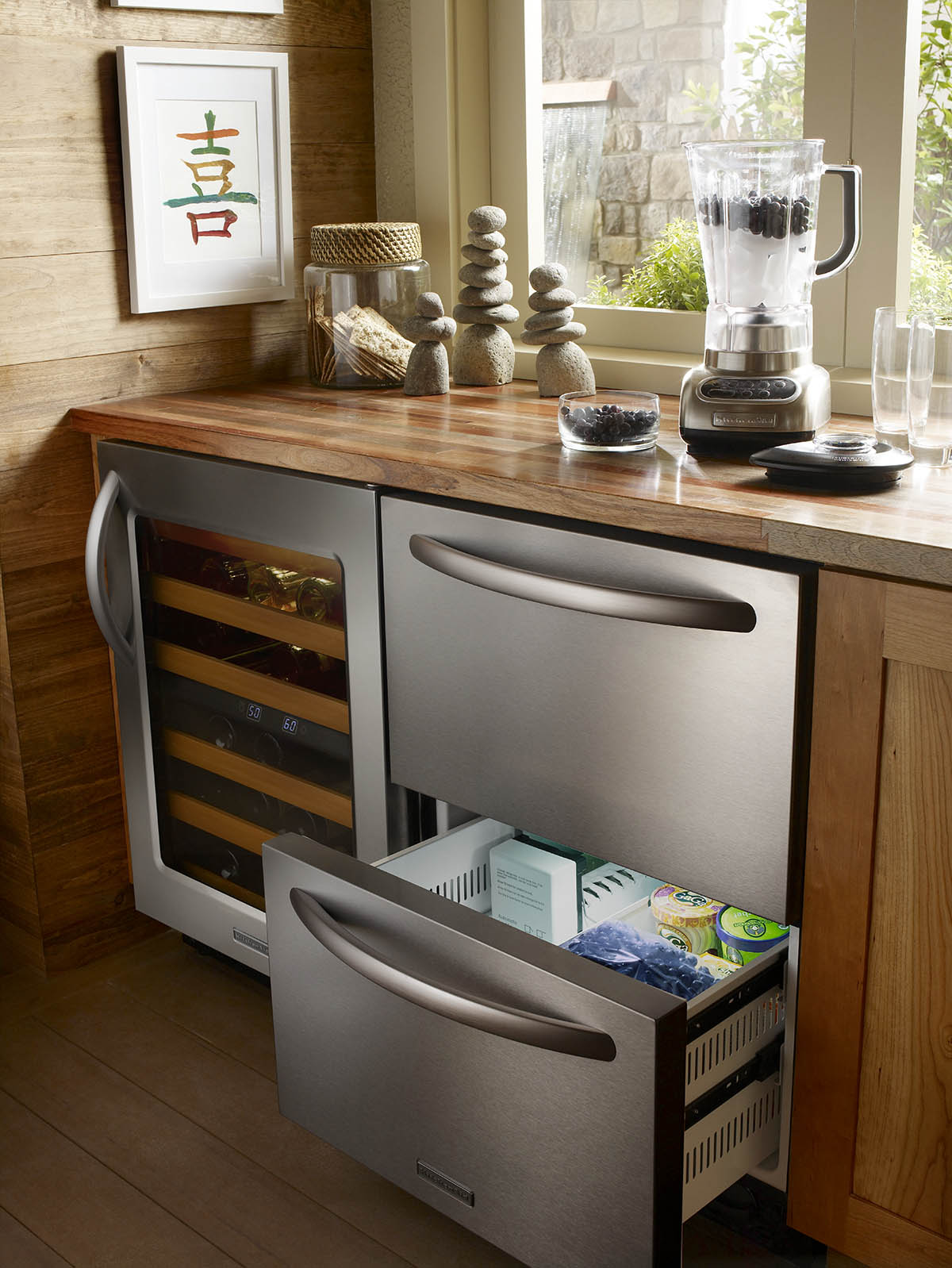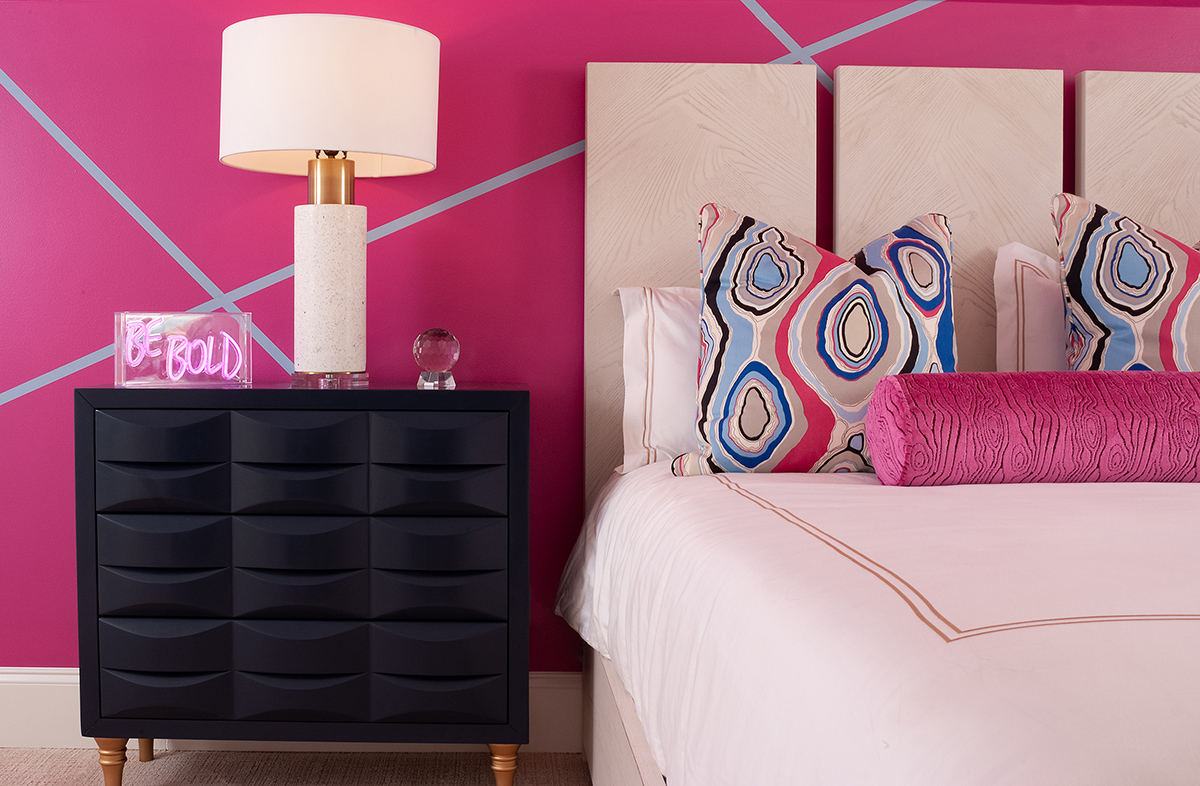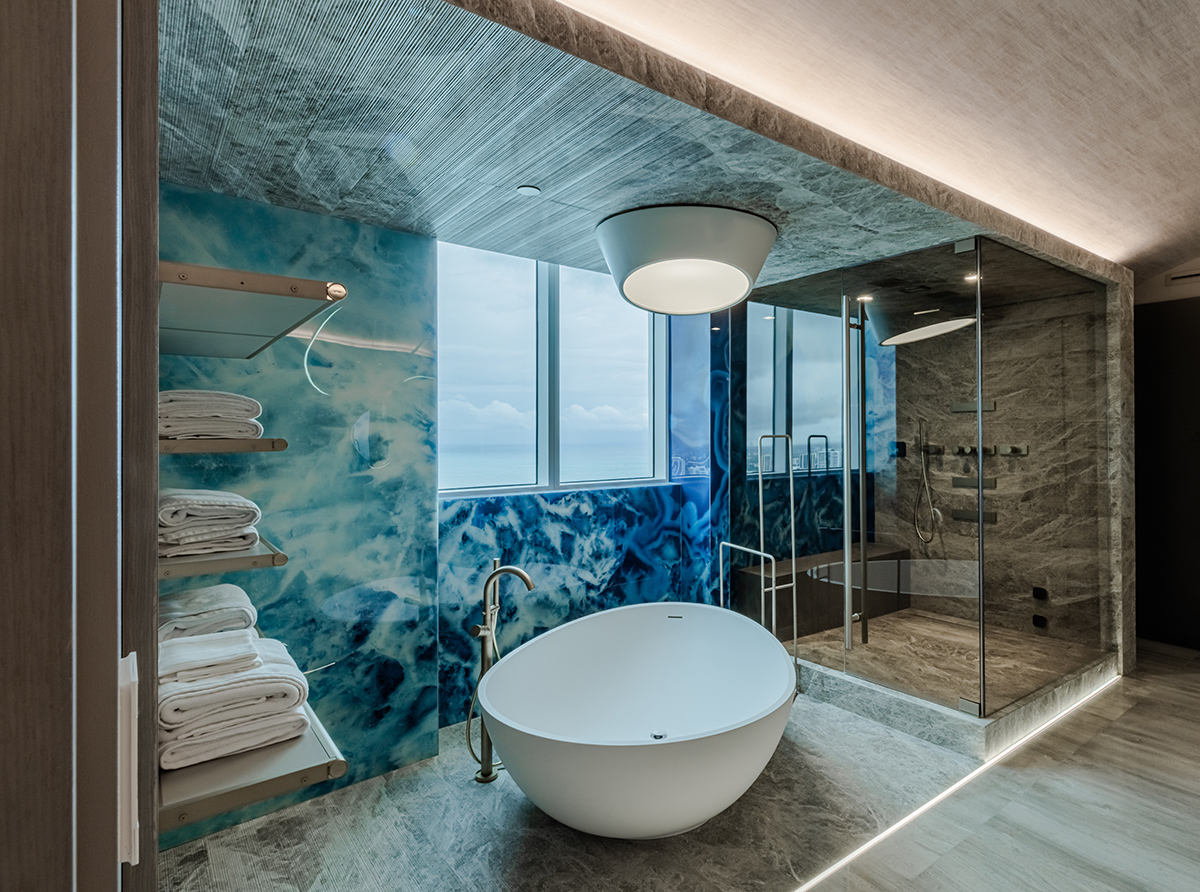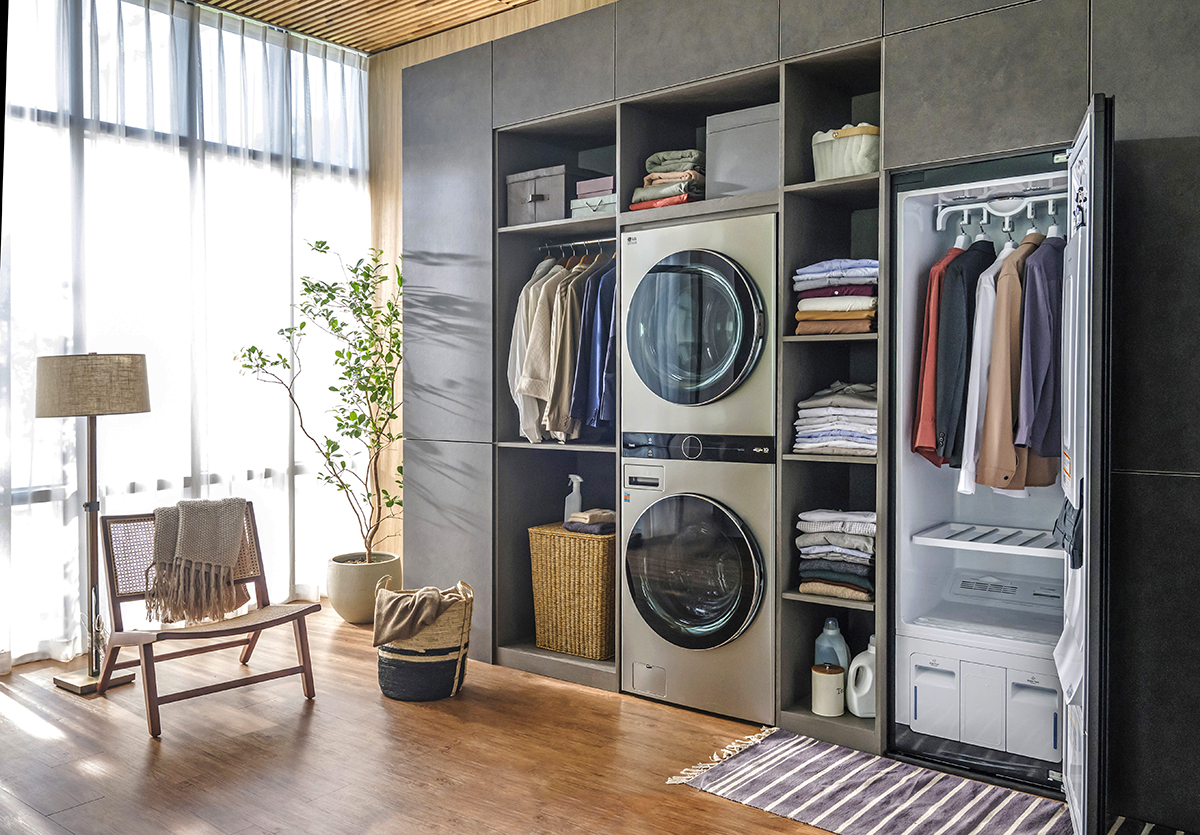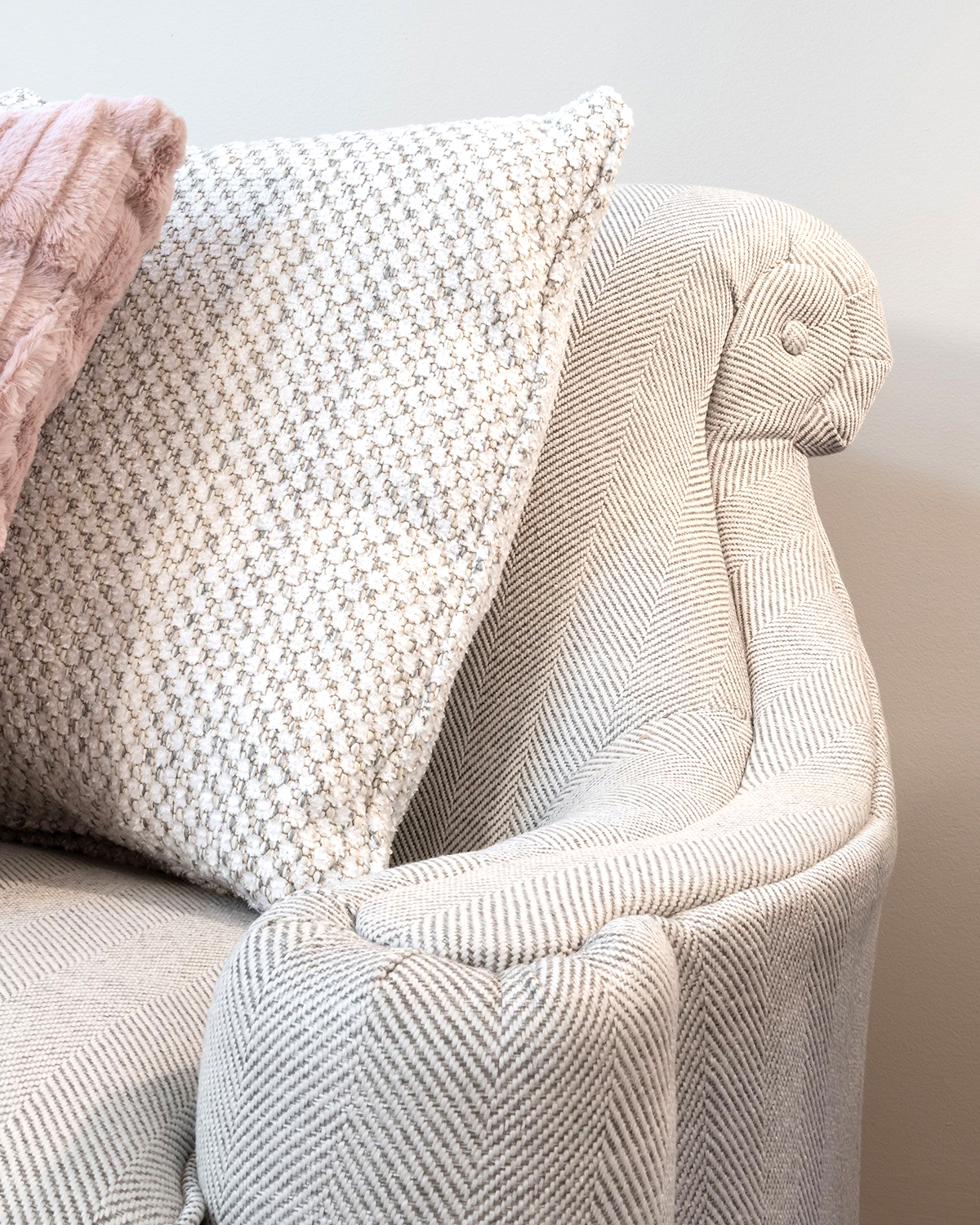WRITER | KIM HYTINEN
Building upwards rather than outwards is a common trend to prevent urban sprawl and conserve land while maximizing profit, but this design style leads to homes with multiple levels and lots of stairs, which can be undesirable. Thanks to this trend, there has been a rise in the popularity of home elevators over the past decade. Once reserved for elite, luxury homes, elevators in residential settings have become more mainstream as affordability and finance options improve. Plus, most homes can be retrofitted, so elevators are not only for new construction.
Depending on your needs and the specifications of the home, there are a variety of elevators available. Hydraulic elevators are meant for heavy-duty use with a standard weight capacity of 750 pounds or more and offer a quiet, smooth ride. While they tend to be more expensive, the cost will vary depending on the number of floors served, upgrades and finishes, number of openings from the cab, and local code.
A traditional cable-operated elevator, known in the industry as a winding drum elevator, is the least expensive and is best suited for new construction homes because the shaft can be implemented in the design in a way that conceals it. It operates by an electric motor that winds the cable to raise and lower the cab. This type of elevator can handle loads between 500 and 750 pounds but requires a separate machine room for the operating components. If placed during new construction rather than retrofitting, the cost for a cable-driven elevator, including installation, starts at about $20,000 compared to a hydraulic elevator that typically runs about $40,000.
When space is an issue, a machine roomless (MRL) elevator is a great option. Rather than needing a separate machine room, the operating equipment is housed in the hoistway. This poses challenges for servicing the elevator, however, and some homeowners opt to install the equipment in a machine room anyway. MRLs can serve up to five floors, allow for standard cab sizes, and are ideal for waterfront properties because the motor and controller can be placed at the top of the hoistway, where there is less chance of flooding.
Another great option when space is an issue or for homes with an open floor plan is a shaftless elevator. These are either hydraulic or winding drum machines that use constant pressure for operation. This is usually regulated by holding a button for the duration of the cab movement. Removing pressure from the button will result in the cab stopping immediately; movement resumes when the button is pressed and held again.
Vacuum elevators also require less space, little construction, and no machine room. They operate using air pressure and can serve up to five landings. Depending on the model, these elevators can accommodate up to 525 pounds.
Two-story homes are often best served by a shaftless elevator, sometimes referred to as a lift. This nontraditional elevator is the easiest to retrofit and takes the least space. It’s a great alternative to a stairlift. Construction is kept to a minimum as there is no need for a separate machine room, hoistway, or pit. These are ideal for people with mobility issues who need a simple solution.
According to McNallyElevator.com, the price of adding a home elevator can vary greatly depending on many factors, including new construction or retrofitting, type of machine, personal finishings, contractor costs, and permit fees. Homeowners can stylize their elevators by selecting from a variety of hardwoods, operating panels, and decorative ceilings, floors, lights, and railings.
Whether you choose to add an elevator to assist with mobility issues or as a feature of convenience, having one adds value to your property.


